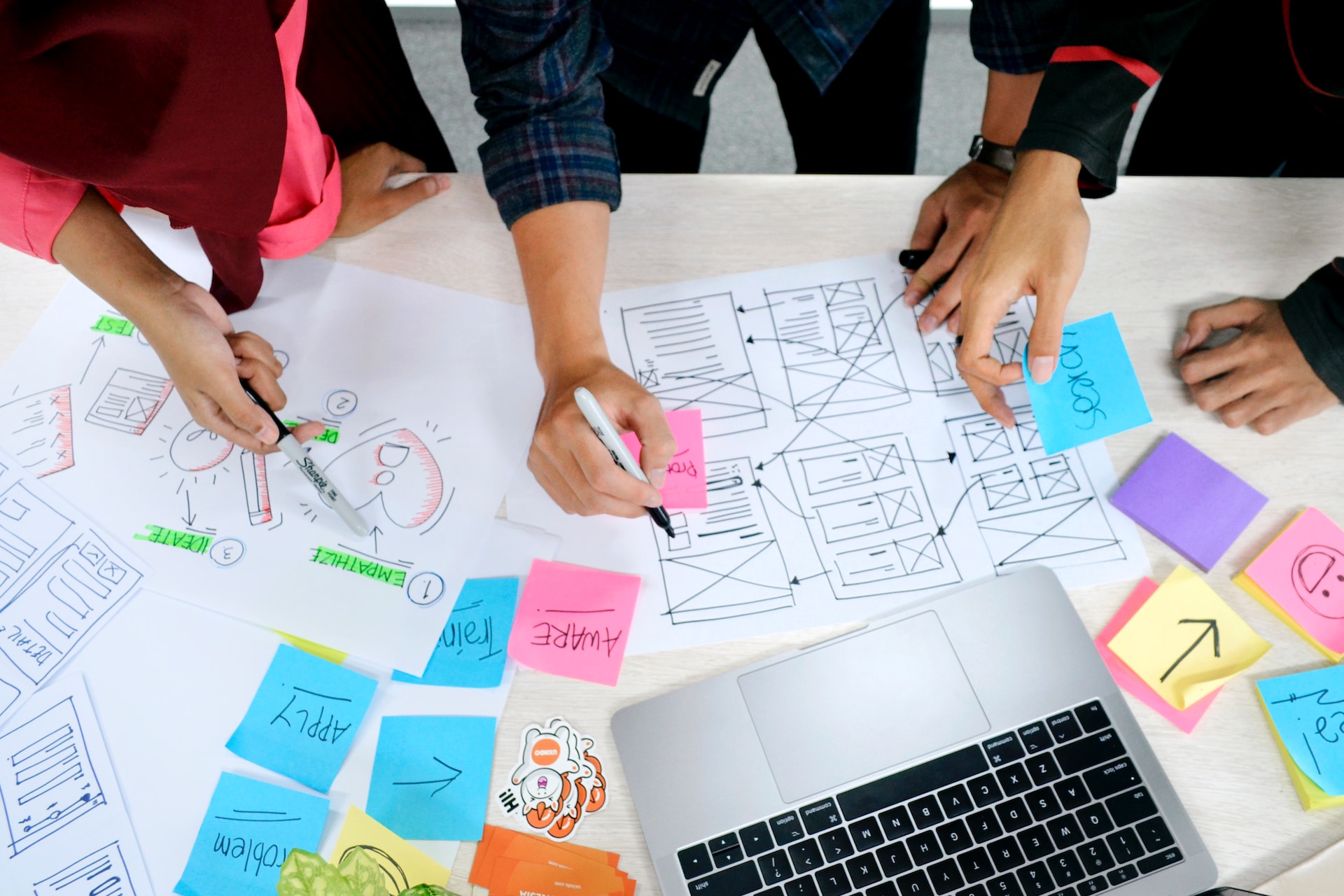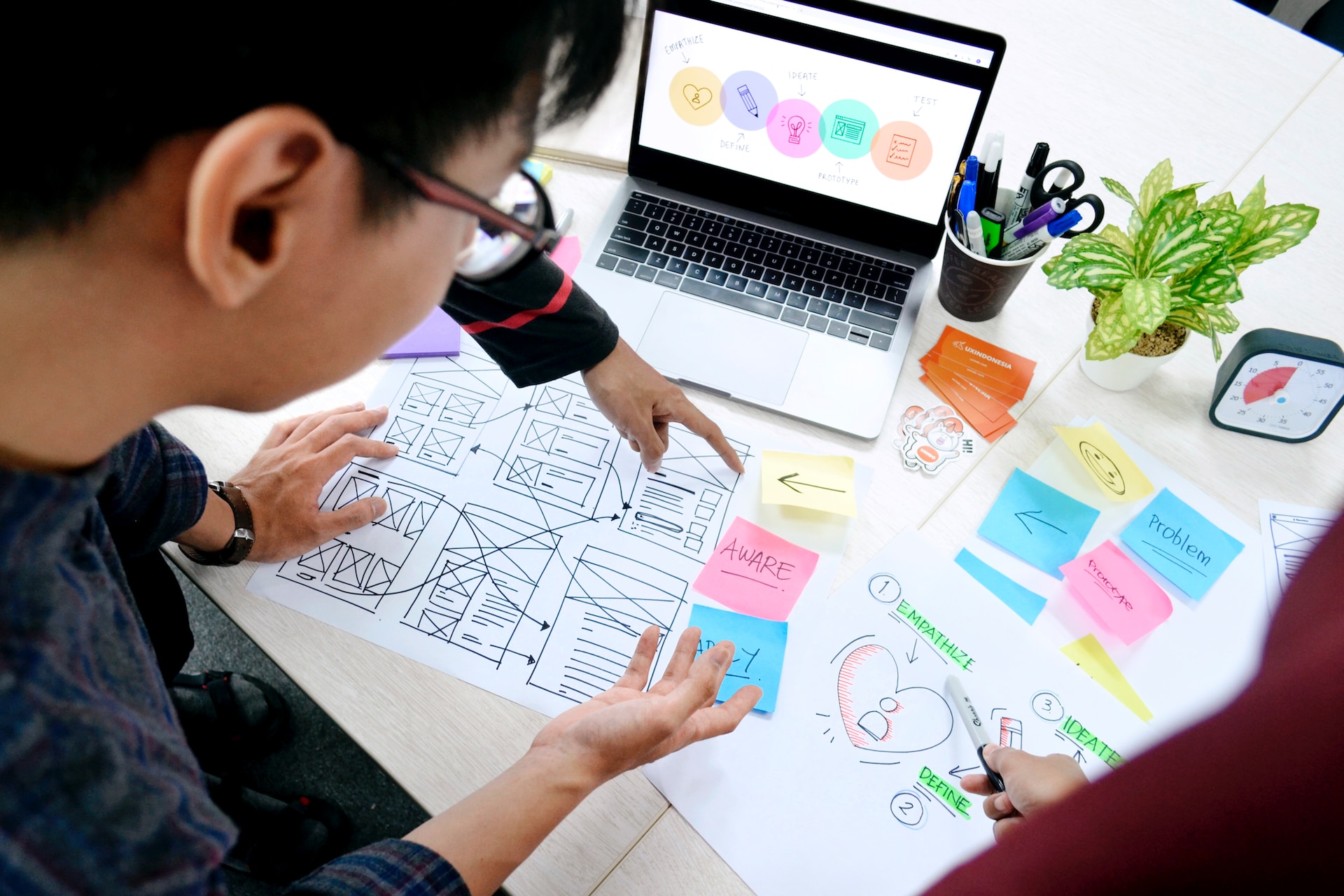Design Thinking Workshop for Product Managers
The Core Principles of the Design Thinking Product Management Process
- Empathy: By understanding the needs, motivations, and pain points of users, product managers can develop empathy for their users, enabling them to create products that genuinely address their needs and provide value.
- Collaboration: Encouraging collaboration between diverse perspectives and cross-functional teams generates innovative ideas and ensures everyone has a shared understanding of the product's goals and requirements.
- Experimentation: By embracing a culture of experimentation, rapid prototyping, and testing, teams can validate ideas quickly, gather feedback, and refine their product offerings iteratively.
- Iterative process: Design Thinking is an iterative, non-linear process, which allows teams to revisit previous stages and refine their understanding, ideas, or prototypes based on new insights or feedback.
The Five Stages of Design Thinking: An In-Depth Look
Empathize: Get to Know Your Users
- Conduct user interviews to gain first-hand insights into users' needs and experiences.
- Use observation techniques, such as shadowing or contextual inquiry, to study users in their natural environment.
- Analyze existing data, such as analytics or customer support logs, to identify patterns and trends.
Define: Frame the Problem
- Collaborate with your team to analyze research findings and identify common themes or patterns.
- Create user personas to represent different user types and their unique needs.
- Develop problem statements, also known as "How might we...?" questions, that frame the challenges your users face and guide your ideation efforts.
Ideate: Generate Creative Solutions
- Use brainstorming techniques, such as mindmapping or sketching, to encourage creative thinking.
- Organize workshops or design sprints with your team to generate and discuss ideas collaboratively.
- Apply constraints or prompts to help your team think outside the box and explore unconventional solutions.

Prototype: Create Tangible Representations
- Focus on creating low-fidelity prototypes that can be quickly developed and iterated upon.
- Use materials and tools that are readily available, such as pen and paper or digital wireframing tools, to create your prototypes.
- Collaborate with your team to iterate and refine your prototypes based on feedback and insights from internal reviews.
Test: Validate Your Solutions
- Conduct usability tests with users to assess the effectiveness of your prototype in addressing their needs and pain points.
- Use A/B testing or other quantitative methods to gather data on user preferences and behavior.
- Iterate on your prototype based on feedback and insights from testing, and repeat the testing process as needed.
Airbnb's Product Design Thinking
Product Thinking vs Design Thinking
Design Thinking is all about understanding the needs of the user and coming up with creative solutions through an iterative process. This approach is often used in the early stages of development to make sure that the product or service is user-centered.
Master Product Design Thinking Today!
Related Courses
Product Thinking for Everyone: Build What Matters with AI and 10x Your Impact
Walk away with the core skills, tools, and support you need to operate like a modern PM
Uplevel Your Product Thinking
Frameworks to evaluate markets & come up with compelling solutions. Applied to 10 product themes! 🔥 500 students 🔥
Mastering AI Product Strategy: From Ideas to MVP
Learn the AI skills you need to evaluate opportunities, design experiences, and build AI-powered products—without coding
Insight Driven Product Management for Growth - Scale Impact in any Organization
You'll analyze patterns between datasets and interpret data to uncover insights. You'll master strategic thinking and product execution.
Journey Design Masterclass
Build an engaging AI experience with high-retention gaming techniques 🎬
The Product Mind Workshop for Startup Founders and Product Managers
This workshop empowers startup founders and product managers with the mindsets to create breakthrough products and reach product-market fit.
You might also like

What is a Product Requirements Document (PRD)?

How to Implement Agile Product Management

Lean Product Management

